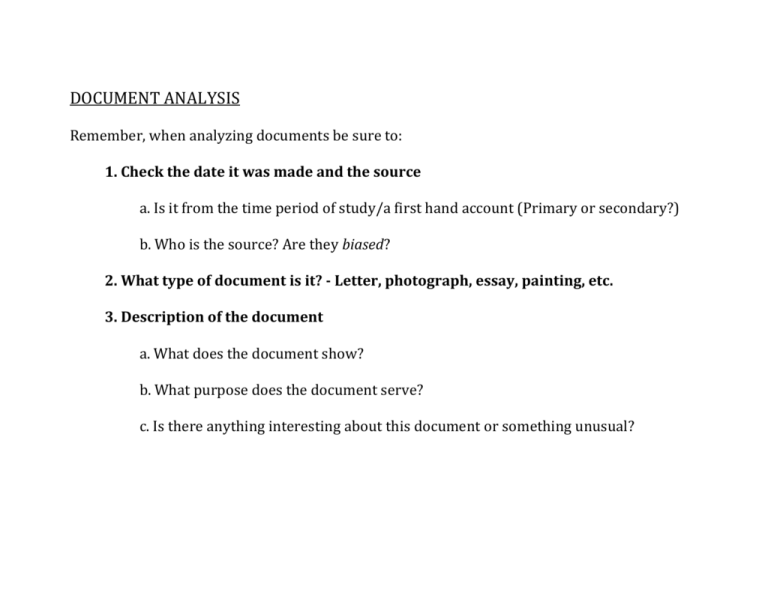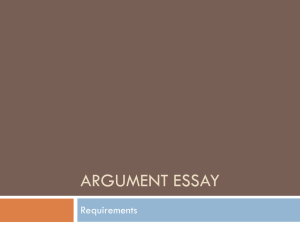Aztec Primary Sources
advertisement

DOCUMENT ANALYSIS Remember, when analyzing documents be sure to: 1. Check the date it was made and the source a. Is it from the time period of study/a first hand account (Primary or secondary?) b. Who is the source? Are they biased? 2. What type of document is it? - Letter, photograph, essay, painting, etc. 3. Description of the document a. What does the document show? b. What purpose does the document serve? c. Is there anything interesting about this document or something unusual? Directions: Using the primary and secondary sources in addition to your own outside knowledge about the Aztecs, respond to the question: “Should historians emphasize agriculture or human sacrifice?” To adequately answer this question, your paper should be around 1-2 pages. Be sure to use textual evidence from the documents when you write your paper and to cite them specifically/explicitly in your writing! You paper should be typed (and printed out), or neatly handwritten. In addition to the content, make sure that your paper: 1. DMS Heading 2. Is double-spaced 3. Is Times New Roman 4. Is 12-point font 5. Has 1 inch margins 4 3 2 Contains a clearly stated thesis that identifies the major reasons used to answer the question. Contains a general stated thesis that identifies/maps out the major reasons used to answer the question. Contains a thesis that begins to identify the major reasons used to answer the question. Contains a thesis that only repeats or rephrases the question Contains no thesis Uses little information from the documents and: No use of documents in essay. Organization and Clarity: A coherent essay with thesis, topic sentence, analysis, and conclusion Analysis: Makes plausible inferences and a rational argument Use of Documents: Effectively uses documents to support arguments Thesis Addresses the prompt and maps out the argument to be made. 5 Skillfully uses all documents/artifacts and: Contains no significant factual errors or misrepresentation of documents. Recognizes point of view where applicable. Draws inferences and conclusion Skillfully uses most of the documents/artifacts and: Contains a few factual errors or misrepresentations of documents Recognizes point of view where applicable. Formulates generally accurate conclusions Incorporates accurate and relevant background knowledge. Presents analysis which reflects understanding of complex issues. Incorporates accurate and relevant background knowledge. Presents analysis which reflects some understanding/analysis of complex issues. Writes a well developed essay consistently demonstrating clear and logical organization including a strong introductory paragraph that includes a clear thesis and a conclusion that effectively summarizes the argument. Introductory paragraph includes a clear thesis. Body paragraphs contain topic sentences and substantial supporting evidence. Fluid writing and organization move the argument forward. Student provides basic conclusion. Uses some of the documents/artifacts and: Contains little supplementary information Attempts to formulate some conclusions: may contain some factual errors. Does not recognize point of view Attempts rational argument and attempts to connect outside knowledge and/or evidence from documents to the thesis. Unevenly developed with a general plan of organization. Introductory paragraph contains a weak thesis or thesis is misplaced. Some body paragraphs lack cohesion. Describes documents more often than draws conclusion. Merely quotes or briefly cites documents, or misunderstands documents. Draws vague conclusions Does not recognize point of view Uses minimal information from documents or copies from documents and uses minimal outside information. Analysis, although attempted is not accurate. Essay is poorly organized. Vague or missing introduction and/ or a conclusion. 1 Uses unclear or inaccurate information for documents. Includes no outside information .Fails to provide analysis. Organization is not evident. Does not include an introduction or conclusion Total Score ___________ and Comments:







